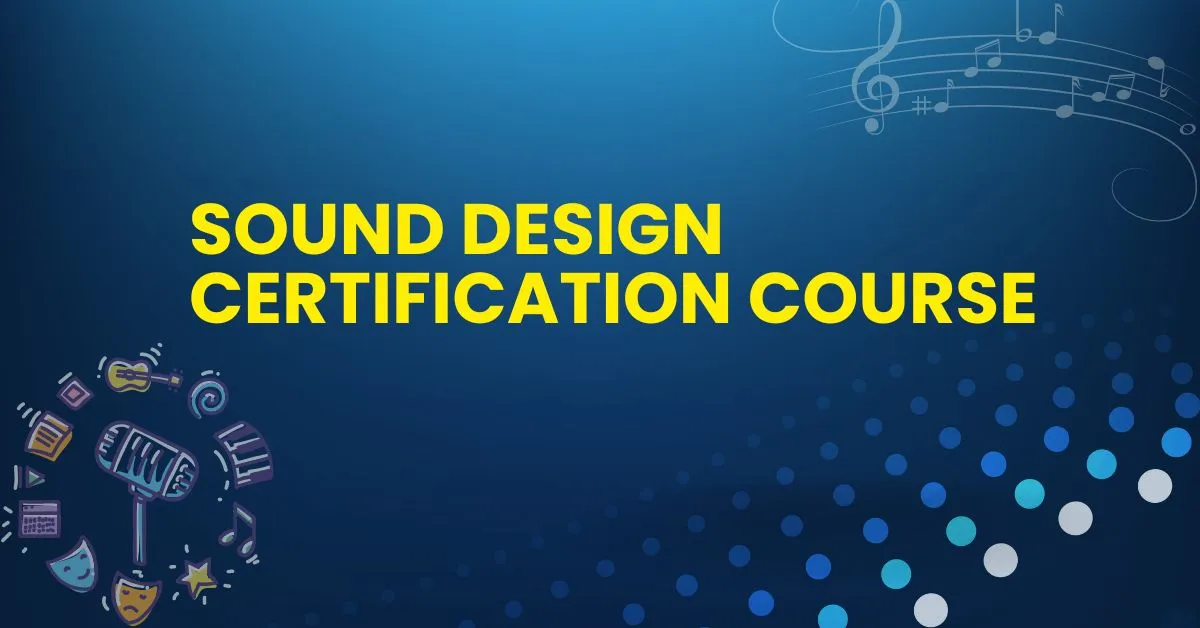


18, May 2023
Sound designing is a creative process that involves the manipulation and arrangement of audio elements to enhance and support various forms of media. It is primarily used in film, television, theater, video games, and multimedia productions. Sound designers are responsible for creating and integrating sounds that contribute to the overall storytelling, mood, and atmosphere of a production.
In sound designing, professionals utilize a combination of recorded sounds, synthesized audio, music, and various sound effects to create a cohesive auditory experience. They carefully select, edit, and manipulate these elements to evoke specific emotions, convey information, and immerse the audience in the intended audio environment.
Sound designing encompasses various aspects, including:
Sound Effects: Sound designers create and incorporate sound effects to enhance the realism and impact of a scene. These can include footsteps, environmental sounds, explosions, machinery, and more.
Foley Artistry: Foley artists create and record live sound effects by mimicking actions on a specially designed Foley stage. These sounds can include footsteps, cloth movements, object interactions, and other subtle nuances that bring realism to on-screen actions.
Dialogue and Voiceover: Sound designers work with dialogue tracks and voiceover recordings to ensure clarity, intelligibility, and proper synchronization with visuals. They may also apply processing techniques to enhance the quality and balance of the spoken words.
Ambience and Atmosphere: Sound designers create and layer ambient sounds to establish the sonic environment of a scene or location. This includes background noises, room tone, and atmospheric elements that contribute to the overall immersion and mood.
Music and Score: Sound designers collaborate with composers and music supervisors to integrate music and score into the production. They ensure proper placement, timing, and mix of the music to enhance the storytelling and emotional impact.
Sound designing Course involves using specialized software and tools such as digital audio workstations (DAWs), sound libraries, synthesizers, and plugins. Sound designers often work closely with directors, producers, and other members of the production team to align the audio with the desired creative vision.
Course Name Sound Design Certificate Course
Duration 6 months - 1 year (varies by institution)
Eligibility High school diploma or equivalent
Course Focus Sound effects, Foley artistry, dialogue editing, mixing techniques, audio integration
There are several certificate courses in Sound Design available that focus on sound designing. These courses provide comprehensive training and education in various aspects of sound design, equipping students with the skills and knowledge needed to pursue a career in this field. Here are a few notable certificate courses in sound designing:
Certificate in Sound Design: Offered by various institutions and academies, this program covers the fundamentals of sound design, including sound effects creation, Foley artistry, dialogue editing, mixing techniques, and integration of audio with visuals.
Certificate in Audio Engineering and Sound Design: This course combines technical aspects of audio engineering with creative elements of sound design. Students learn about recording techniques, audio editing, digital signal processing, music production, and sound design for different media platforms.
Certificate in Game Sound Design: Focused specifically on sound design for video games, this course explores topics such as interactive audio, adaptive music, implementation techniques, game engines, and integrating audio into game development pipelines.
Certificate in Film and Television Sound Design: Designed for aspiring sound designers in the film and television industry, this program covers sound editing, sound mixing, ADR (Automated Dialogue Replacement), Foley artistry, and post-production workflows.
Certificate in Live Sound Design: Geared towards individuals interested in sound design for live performances and events, this course delves into topics such as sound reinforcement systems, console operation, stage monitoring, audio networking, and troubleshooting.
When considering a sound designing certificate course, it is important to review the curriculum, faculty expertise, practical training opportunities, and industry connections of the institution offering the program. Additionally, considering factors like course duration, tuition fees, and available resources can help you make an informed decision.
Remember, practical hands-on experience and building a portfolio are crucial for success in sound designing. Therefore, it is beneficial to choose a certificate course that offers opportunities to work on real-world projects and collaborate with industry professionals.
After completing a certification in sound design, you can explore various career options in the audio and entertainment industry. Here are some potential career paths:
Sound Designer: You can work as a sound designer for film, television, theater, video games, or other multimedia productions. Your responsibilities may include creating and integrating sound effects, Foley artistry, dialogue editing, and overall sound design to enhance the storytelling and audio experience.
Foley Artist: Foley artists specialize in creating and recording live sound effects to synchronize with visuals. This career path involves performing and recording various actions and movements, such as footsteps, object interactions, and cloth movements, to add realism and depth to on-screen actions.
Audio Engineer: As an audio engineer, you can work in recording studios, live events, or broadcasting environments. Your role may involve recording, editing, mixing, and mastering audio, as well as operating and maintaining audio equipment and software.
Music Producer: With a background in sound design, you can pursue a career as a music producer. You would be responsible for overseeing the entire production process of music tracks, including recording, arranging, mixing, and mastering.
Game Sound Designer: Game sound designers create immersive audio experiences for video games. They design and implement interactive sound effects, music, and dialogue, considering the gameplay mechanics, narrative, and player experience.
Audio Post-Production Engineer: In the post-production field, you can specialize in audio editing, mixing, and mastering. This career path involves working on sound for films, TV shows, commercials, or other audiovisual content, ensuring the overall audio quality and consistency.
Sound Editor: As a sound editor, you would focus on editing and organizing audio assets, including dialogue, sound effects, and music. This role often involves working closely with sound designers, mixing engineers, and post-production teams.
Audio Programmer: For those with technical expertise, pursuing a career as an audio programmer can be an option. Audio programmers develop tools, plugins, and software solutions used in sound design and audio production workflows.
A sound designing certificate course offers a focused and comprehensive education in the art and technical aspects of sound design. By completing this program, you can acquire the necessary skills and knowledge to pursue a rewarding career in various fields such as film, television, theater, video games, and more.